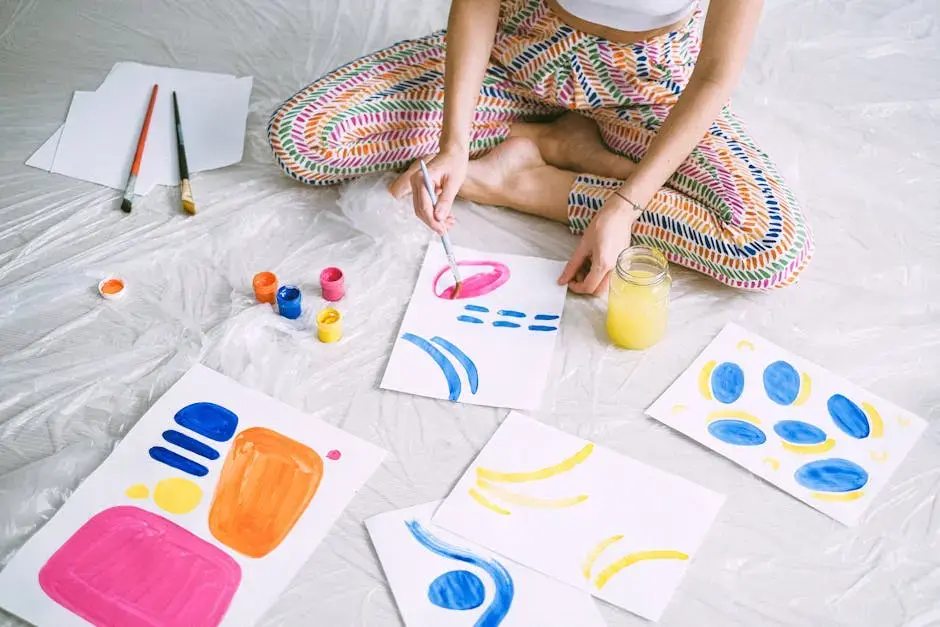What Does an Art Therapist Do?
- Karrie Stafford

- Dec 27, 2024
- 3 min read
Art therapy is a unique and transformative approach to healing that utilizes the creative process of making art. In this blog, we will explore the essential roles and functions of an art therapist, shedding light on how they facilitate emotional and psychological growth through artistic expression.

Understanding the Role of an Art Therapist
An art therapist is a licensed professional who uses art as a medium for therapy. This section covers the foundational aspects of their role, including qualifications and areas of expertise.
Art therapists often possess advanced degrees in art therapy or psychology, ensuring they have a robust understanding of both mental health and artistic practices. This combination allows them to tailor their approach to each client's needs effectively.
In addition to their formal education, art therapists are trained in various psychological theories and therapeutic modalities. This enables them to assist clients in exploring emotions, improving self-esteem, and coping with trauma through art.
Moreover, art therapists work in diverse settings, from hospitals and schools to private practice. They adapt their methods to fit the unique challenges faced by their clients, underscoring the flexibility and accessibility of art therapy.
The Therapeutic Process
Learn about the step-by-step process that art therapists use to engage clients in safe, creative activities that promote healing and understanding. The journey often begins with understanding the client's needs and setting therapeutic goals.
Once the goals are established, art therapists guide clients through various creative exercises. These could include drawing, painting, or sculpture, all designed to facilitate expression in a manner that feels comfortable for the individual.
Throughout the sessions, the therapist provides a supportive environment where clients can explore their thoughts and feelings without judgment. This safe space is crucial in helping individuals feel free to express themselves artistically.
Additionally, reflection plays a significant role in the therapeutic process. After creating art, clients often discuss their work, allowing for deeper insights into their emotions and experiences, further enriching the healing journey.
Who Can Benefit from Art Therapy?
Art therapy isn't just for artists; it can help individuals of all ages facing various challenges. This section discusses the diverse populations that can benefit from this form of therapy.
From children struggling with anxiety to adults coping with depression or trauma, art therapy provides a unique outlet for expression. It can be especially beneficial for those who find verbal communication challenging.
Furthermore, art therapy is applicable in diverse scenarios, including grief counseling, rehabilitation, and even working with individuals on the autism spectrum. Its versatility means that it can adapt to various needs and settings.
Ultimately, the beauty of art therapy lies in its inclusivity. Regardless of artistic skill, anyone can find value in the therapeutic process, making it a powerful tool for healing across different populations.
Common Techniques Used in Art Therapy
Art therapists employ several techniques, from painting to sculpting. Here, we highlight some of the most popular modalities and their therapeutic benefits.
One common technique is drawing, where clients use pencil or charcoal to create images that reflect their feelings—be it joy, sadness, or confusion. This method can reveal hidden emotions and thoughts that might be difficult to verbalize.
Another technique involves collage, allowing clients to combine various images and materials to create narratives about their lives or future aspirations. This tactile approach engages the senses and encourages personal storytelling.
Additionally, sculpture offers a three-dimensional means of expression. Working with clay or other materials can provide a tactile experience that fosters relaxation and playfulness, which can be especially beneficial in therapeutic settings.
The Impact of Art Therapy
Discover the positive outcomes and research findings that underline the effectiveness of art therapy in promoting mental health and well-being. Numerous studies demonstrate that engaging in creative activities can lead to reduced anxiety and enhanced emotional regulation.
Clients often report feelings of empowerment upon completing their artwork, which can significantly boost self-esteem. This newfound confidence can be transformative, fostering resilience and personal growth.
Moreover, art therapy has been shown to enhance communication skills. As clients express their thoughts and emotions through art, they often find it easier to articulate complex feelings verbally, improving their overall social connections.
Additionally, research supports art therapy's role in improving trauma recovery outcomes. The act of creating can promote healing, allowing individuals to process their experiences on their own terms, often leading to significant breakthroughs.
In Summary
Art therapists play a vital role in mental health care, offering individuals a non-verbal means to express themselves and heal. By incorporating creative practices, they help clients navigate their feelings and experiences in a supportive environment.




Comments